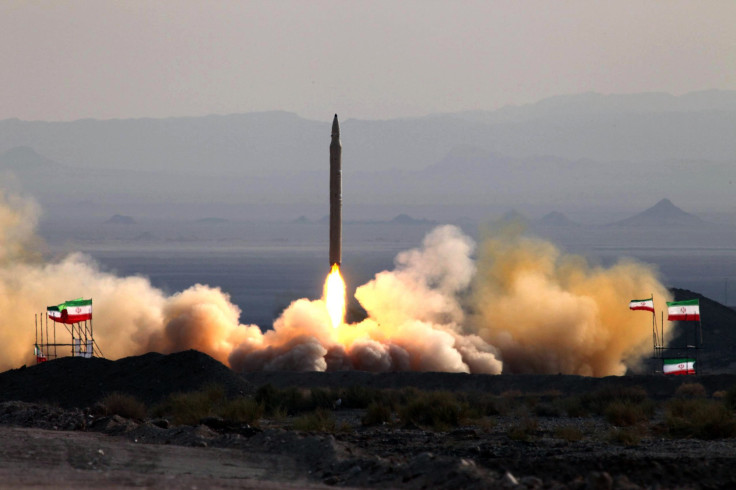Iran Test-Fires 2 More Ballistic Missiles Despite Threat Of New Sanctions From US

Iran test fired two new ballistic missiles early Wednesday despite a threat of a diplomatic response from the U.S. over the beginning of a military exercise the previous day, when it claimed to have test-fired several missiles from underground silos, Reuters reported, citing local news agencies.
The country’s Islamic Revolutionary Guards Corps (IRGC)’s missile tests on Tuesday challenged a resolution by the United Nations and triggered a threat from the U.S. saying that it would push for more unilateral sanctions.
In the latest tests, two Qadr H missiles were fired from the northern part of the country and hit the southeastern part, travelling a distance of about 870 miles, Reuters reported, citing local news reports. Reuters also added that the IRGC has a stock of several short and medium-range ballistic missiles, which is the largest in the Middle East.
“The missiles fired today are the results of sanctions. The sanctions helped Iran develop its missile program,” Brigadier General Hossein Salami, deputy commander of the IRGC, told Fars News Agency, according to Reuters.
On Tuesday, a state television network in Iran showed a missile being fired from the underground silo that hit a target 434 miles away. The missile was known to be the medium range Qiam-1. Although the reports said that several missiles were test-fired across the country, the footage was shown for only one.
Mark Toner, the spokesman for the U.S. Department of State said Tuesday that officials in Washington were reviewing the test and if it is confirmed then the incident will be raised in the U.N. Security Council for an “appropriate response,” CNN reported. “We also continue to aggressively apply our unilateral tools to counter threats from Iran's missile program,” Toner also said, according to Reuters.
A journalist based out of Tehran, told Al Jazeera that Tuesday’s missile tests were aimed at sending a “message to Iran's main enemies in the region.” The IRGC’s official website also said, according to Reuters, that the test on Tuesday was “to show Iran's deterrent power and also the Islamic Republic's ability to confront any threat against the (Islamic) Revolution, the state and the sovereignty of the country.”
The underground silos are seen as a complementary gear for IRGC’s underground “missile cities,” Tasnim News Agency reported Tuesday. The agency also cited IRGC Commander Major General Mohammad Ali Jafari to say that the launch of different types of missiles Tuesday was just to show that the missile silos are spread all across the country and that they are fully operational. The missile drill was reportedly in progress for days before its final stage of testing.
U.S. and French officials said that the test would be a violation to resolution 2231 that specifies that the country is not to conduct “any activity” related to ballistic missiles that can deliver nuclear weapons. However, the test would not violate the Iran nuclear deal, according to which the country promised to restrict its atomic program in exchange of receiving relief from the economic sanctions.
Iran has so far denied any links between the ballistic missiles test and the controversial nuclear program.
Brigadier General Amir Ali Hajizadeh, commander of the IRGC's aerospace arm, said, according to Reuters, that the sanctions would not stand in the way for Iran to develop ballistic missiles. The IRGC’s website also reportedly quoted him saying: “Our main enemies are imposing new sanctions on Iran to weaken our missile capabilities … But they should know that the children of the Iranian nation in the Revolutionary Guards and other armed forces refuse to bow to their excessive demands.”
© Copyright IBTimes 2024. All rights reserved.






















